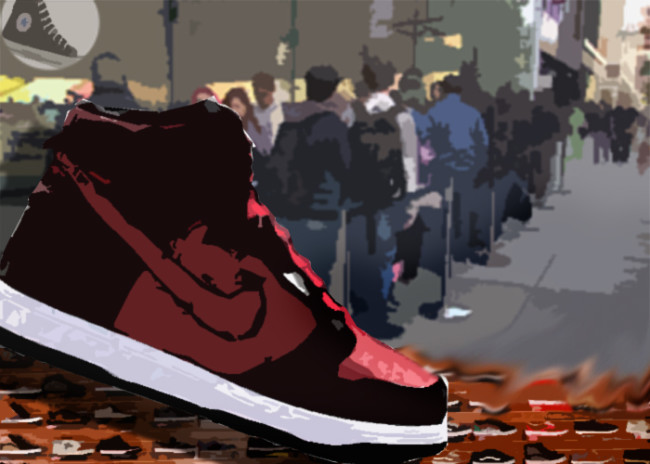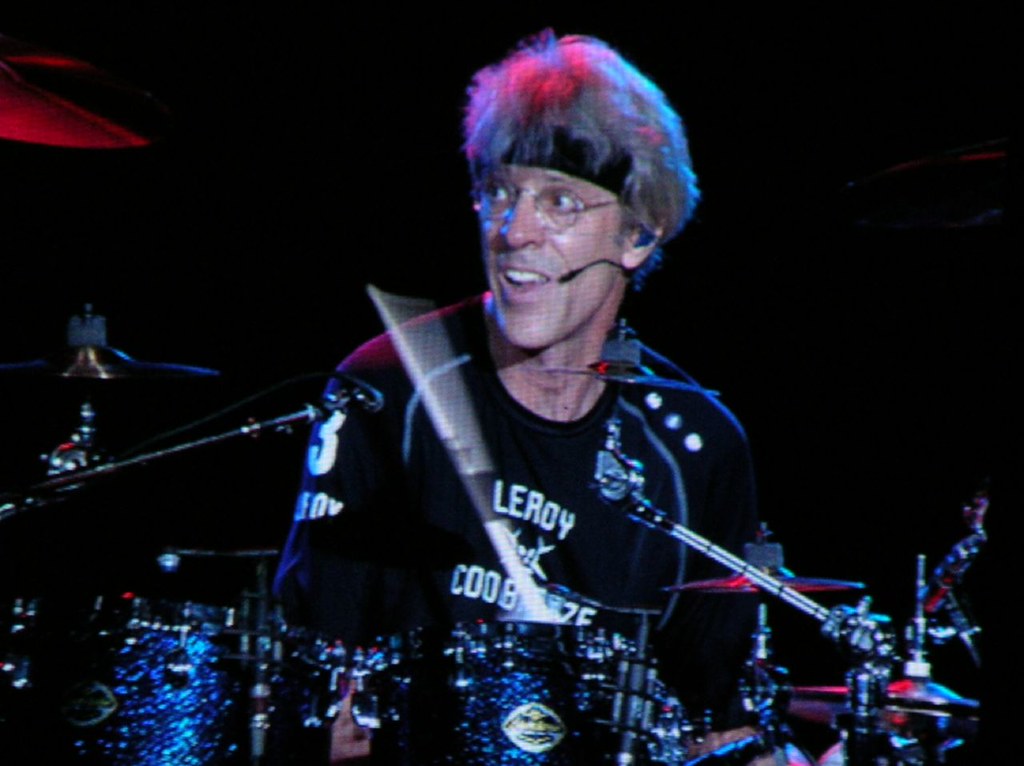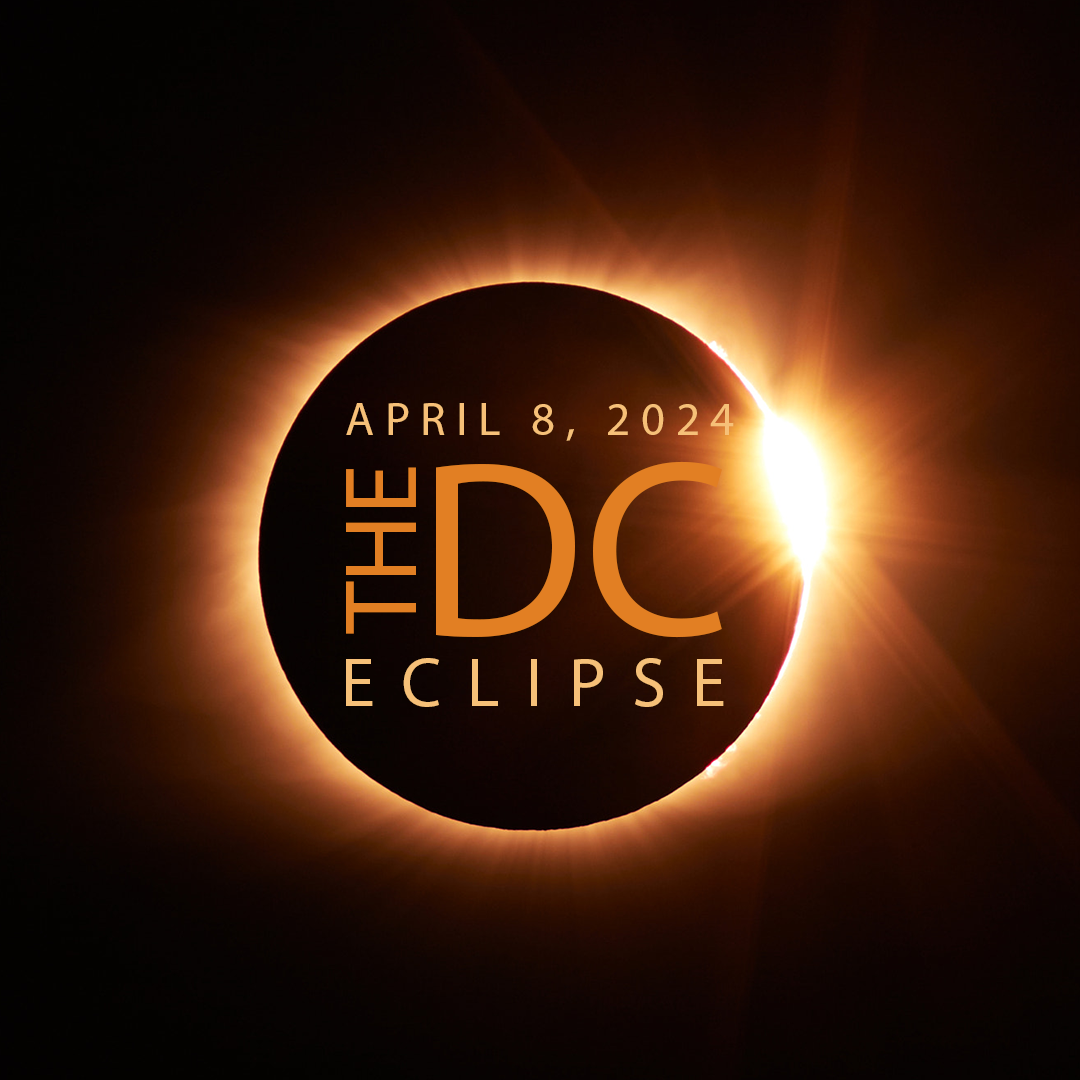
It’s 5 a.m. and there is a line of teenagers and adults parked in front of the Footlocker at FireWheel Mall in Garland. They’re wearing puffer vests, blankets and hats on this chilly morning. They aren’t waiting for concert tickets or the new iPhone. They’re waiting for a pair of shoes.
“It’s hard to describe,” said Grant Astur, an 18-year-old who owns about 25 to 30 pairs of sneakers. “It’s really cool. You save up your hard-earned money for it.”
He was in line with his friend for a pair of Nike Fire Red Fours. The shoes, a pair of red and black low tops, would set him back $179 plus tax. Astur, from Pleasant Grove, plans to keep the sneakers, but if he wanted to, he could sell them on the open market for even more.
Shoes like the Nike Fire Red Fours double or even triple in price after they’ve sold out from stores like Foot Locker, Champs and Finish Line and resellers get their hands on them. Both in stores and on the streets, buying, reselling, collecting and trading sneakers are all part of a growing sneaker culture.
With the swelling sneaker bubble, resellers play an even bigger role in the culture. The buying of new or old shoes and then selling them at marked up prices have led to violence, frustration and skyrocketing prices.
“It started as a creative underground movement,” said Jazerai Lord, general manager of Kicks on Fire. “It was never really this organized giant that it is now.”
Kicks on Fire, started by providing information for the sneaker community 10 years ago, Today, it receives 2.2 million hits a day. The Los Angles based-site, started by Khan Furqan, which has everything sneaker related: sneaker releases, culture and style articles. It even hosts a buying and selling site, kixify.com.
Before the Nikes, Jordans and LeBron’s of today, All-Star Converse were the shoes of the pre-sneaker era, everyone from pro-basketball players to angst-driven teenagers wore them in the 60s and 70s.
Chuck Taylor’s endorsement of Converse changed everything. Companies like Adidas’ and Puma began paying athletes to wear their shoes. Adidas’ Original Era, a simple shoe with three diagonal stripes down each side, for a short time was the It shoe for Americans. Then Nike signed a $2.5 million deal with Michael Jordan in 1985 and Air Jordan became the second most popular shoe in the United States.
Lord, who owns about 240 pairs and has been part of the culture for 21 years, knows the sneaker culture has been around.
“It’s been rewrapped and repackaged and become a new thing,” she said.
Just in time for the 2011 Christmas season, Nike re-released the Air Jordan 11 Concord on Dec. 23. Hundreds lined up for a newer version of the shoes Jordan used to wear on the court. That’s when the modern sneaker craze took off, according to Lord.
“There is no subculture anymore,” she said. “It is the main culture.”
For sneakerheads, camping out is a rite of passage.
Sport Sole, a sneaker store located near Love Field airport, had about 30 people camped out for the Gamma Blue Retro 11 in mid-December. Sport Sole had less than 30 pairs of shoes in stock.
“They were gone within that day,” said Rico Lopez, assistant manager at Sport Sole.
Camping out was necessary to getting the newest releases. There would be one or two stores in a city and a handful of people would line for a handful of shoes. About a 1000 pairs of shoes would be released across the country.
“Now people camp out for a general release that every store has,” Lord said.
A release could mean 26,000 pairs of shoes available at several hundreds of stores and online. At the 2011 Concord release, at least four people were arrested in Litunia Georgia, shots were fired in Massachusetts and a 20-year-old man was stabbed seven times during a fight. The violence over a pair of Jordans is a flash back to when the Jordan’s Nike endorsement deal set off the sneaker craze. In 1989, a 15-year-old boy was killed and left in the woods for a pair of Air Jordans. According to Lord, the amount of violence that happens is a significant change in the culture.
“The frustration is growing,” Lord said.
The causes for the violence are the availability of the shoe and the hype surrounding it.
Nike tweeted that Air Yezzy 2, the last Kanye West and Nike shoe, would be released at 10 a.m. on a Sunday morning in February. The $245 shoe sold out within 11 minutes. The shoe, referred to as the Red October, was being offered through resellers for up to $10,000.
“They don’t care about the cost,” Lopez said. “It’s who has the best, the most exclusive or the coolest. They have bragging rights.”
With growing concerns about the safety of camping out for pairs of shoes, brands like Nike offer raffles via Twitter to combat the early morning rush. However, new concerns with raffles are “bots,” software created to claim or buy pairs of shoes online during releases. The bots are for resellers who pick up several dozen of pairs and then resell them at a mark up. People will buy the shoes, regardless of the price for the 15 minutes of sneaker fame.
“It’s only sad, every time there is a solution another problem arises,” Lord said.
People like 27-year-old Reggie Smith, a self-described reseller’s reseller from Norman Oklahoma, buys used shoes online than sells them at minimum $50 markup. He caps what he will spend per a shoe at $350 per a pair but has sold a LeBron 10 Cork for $1000.
“When I sold my first shoe, it was exciting,” said Smith.
He has sold about 30 pairs of shoes.
Resellers like Smith, who marked up the Corks by 400 percent, can make a living off of reselling sneakers on forums, social media sites, Ebay and Craigslist.
“Sneakers are in faces everywhere,” Lord said. “The Cheerios man wears sneakers.”
Pop culture figures like Kanye West, Walleye and other rappers contribute to increased demand cross culturally. Sneakerheads’ shoe demands differ within each city and each county. In America, basketball shoes are the main attraction, but in European countries people camp out for trainers like Puma. In Dallas, LeBron’s aren’t as popular as they are in Atlanta.
“The way people perceive and participated in the culture is different,” Lord said.
More recently, sneakers have crossed from street to high fashion.
“A dope shoe to me is dope shoe regardless,” Lord said. It’s beautiful to see that wasn’t supposed to fit there fit so perfectly. I don’t care who it is if it comes out great it comes great.”
Jehadu Abshiro is a junior majoring in journalism and creative advertising at Southern Methodist University.She can be reached via Twitter @jeydu











